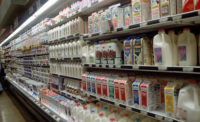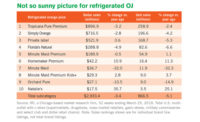Dairy product sales in the United States have continued to rise during 2008, defying higher prices for consumers and creating a number of challenges and opportunities for packagers in the future, according to a new report.
Dairy product sales in the United States have continued to rise during 2008, defying higher prices for consumers and creating a number of challenges and opportunities for packagers in the future, according to a new report.
The survey compiled by the Packaging Machinery Manufacturers Institute reveals demand for dairy products in the United States alone was found to be up by 2%, negating a 9% hike in pricing during 2008.
The report suggests further growth potential for dairies over the coming year amid continuing volatility in milk and commodity prices, putting packagers under greater pressure to meet specific innovation needs amongst processors.
Citing information from the International Dairy Foods Association, the report suggests that with a retail value of about $50 billion per year, the dairy industry is now the fourth fastest growing grocery segment in the United States.
“However, the industry also faces challenges, such as uncertain availability for raw materials and price fluctuations, which are likely to intensify in the coming years,” the report says.
According to PMMI, the U.S. dairy market is currently dominated by 15 so-called “mega dairies,” including Dean Foods and HP Hood, suggesting further consolidation by a growing number of manufacturers.
With these possible shifts expected over the next 12 months, the report claims that 71% of dairy processors are likely to invest in packaging equipment over the coming year, with another 16% thought to be looking to overhaul entire line applications with new machinery.
Despite wider concerns on cost effectiveness in the economic downturn, these investment attitudes are seen as reflecting consumer interest in healthy and convenient food products.
The study suggests that similar attitudes to sustainability from consumers mean that dairy processors are particularly interested in less energy intensive processing.
“Primary and secondary packaging change drivers include considerations about the most economical and environmentally friendly materials, customer requirements and improving efficiency to address lower margins,” the report continues.
With this predicted interest from the dairy segment in overhauling packaging operations, the report says that greater cooperation between pack suppliers and dairies is expected. According to the findings, 90% of companies surveyed by PMMI say they rely on machine builders to train their operators, while 73% wanted the companies to be more consultative both in design and installation.
For more information, visitwww.pmmi.org.
Get our new eMagazine delivered to your inbox every month.
Stay in the know on the latest dairy industry trends.
SUBSCRIBE TODAYCopyright ©2024. All Rights Reserved BNP Media.
Design, CMS, Hosting & Web Development :: ePublishing

